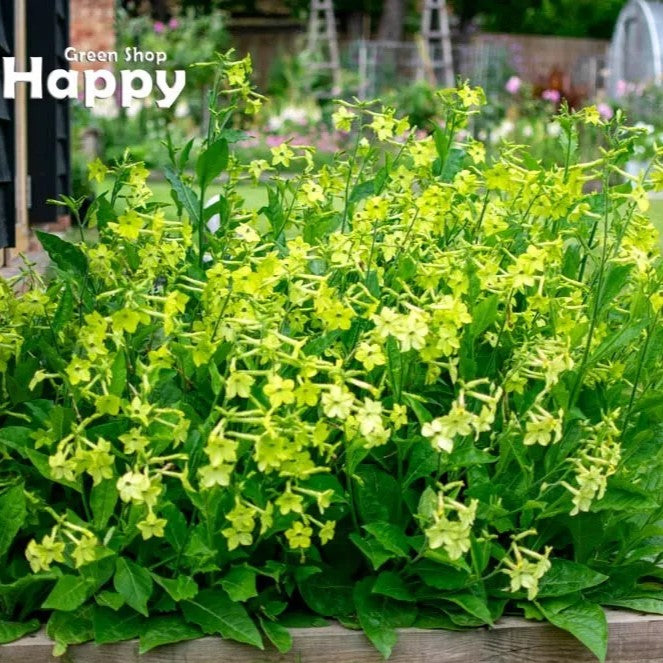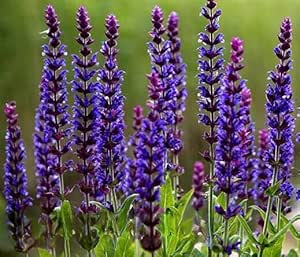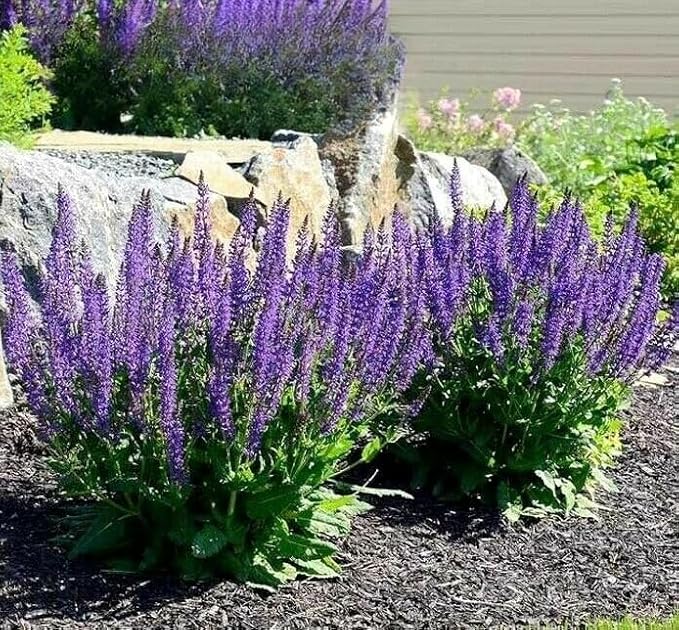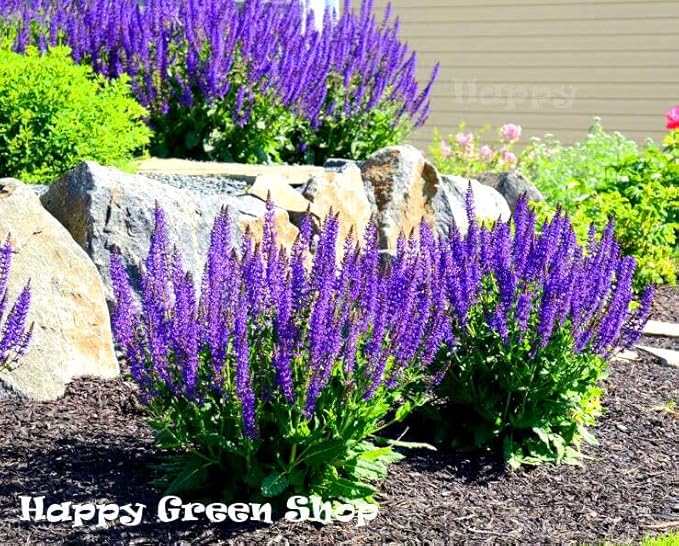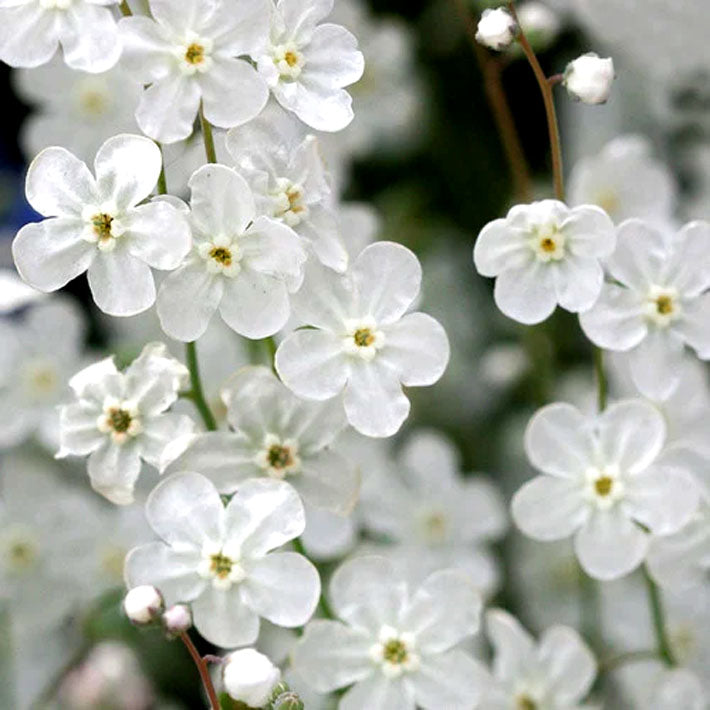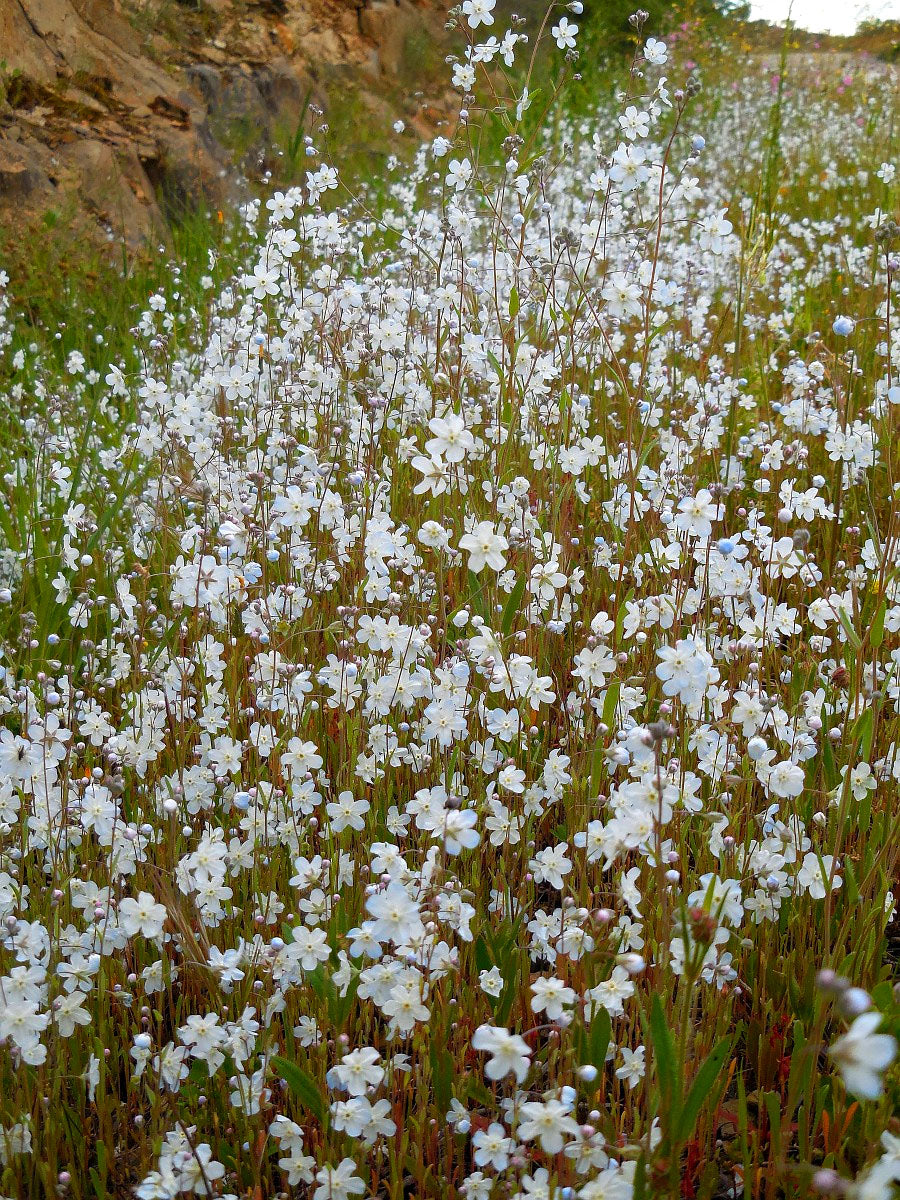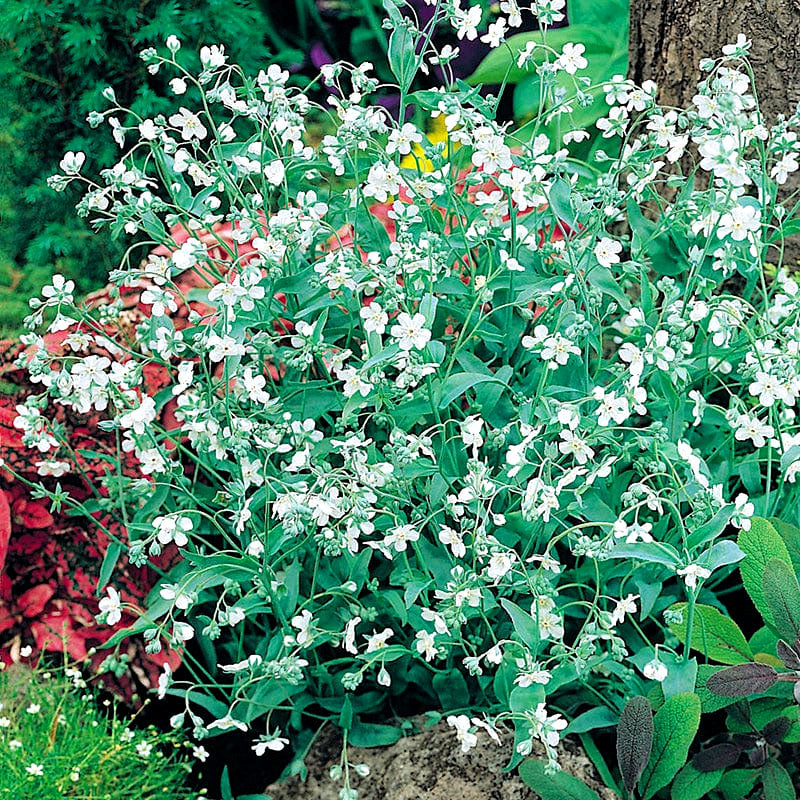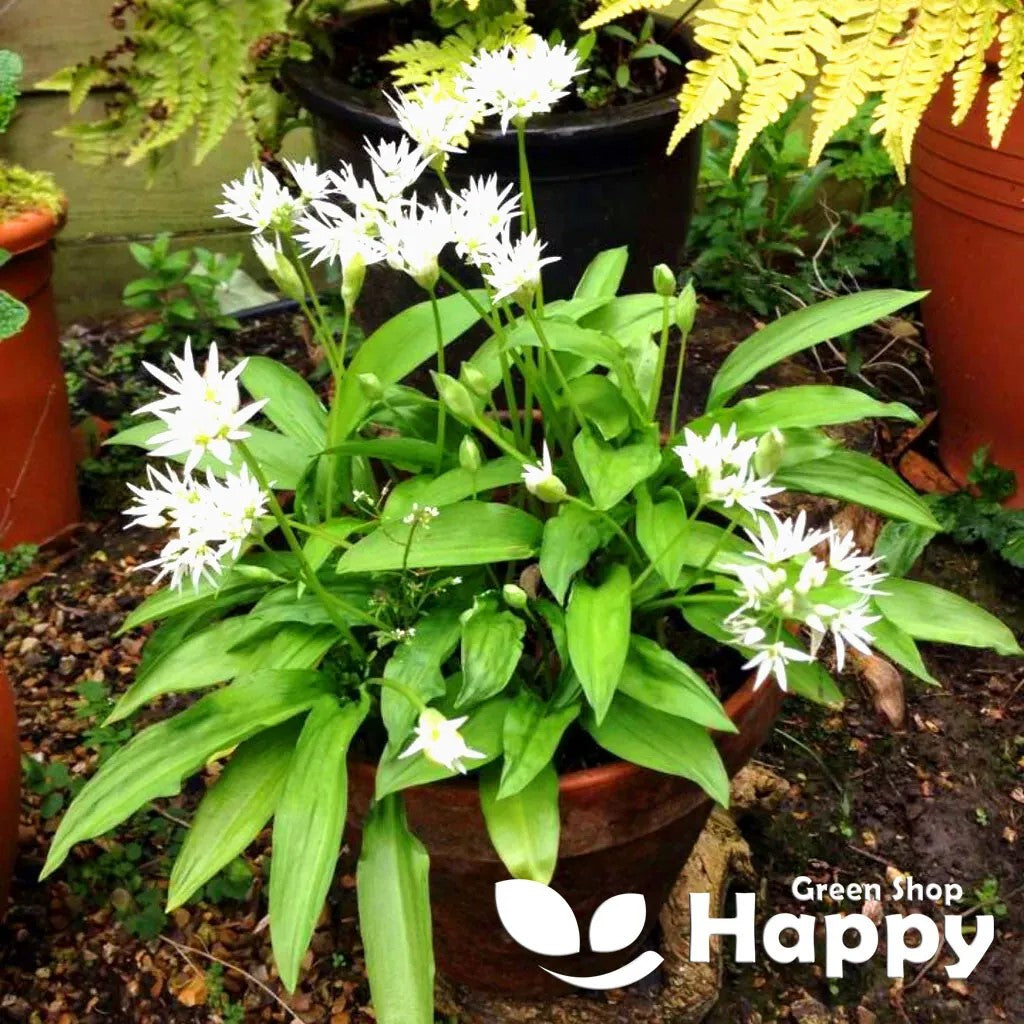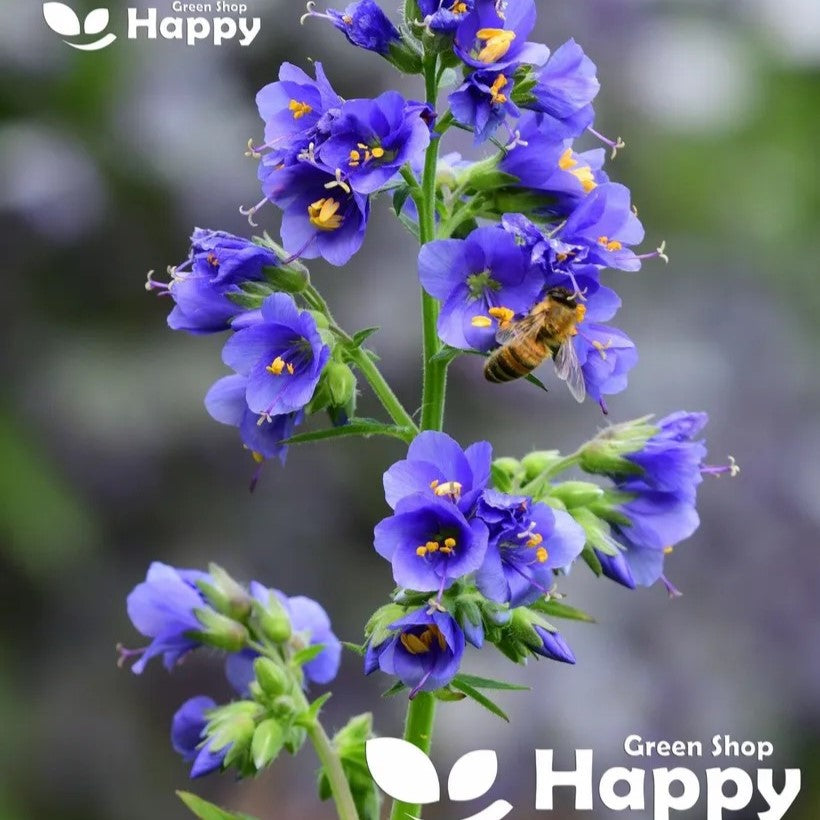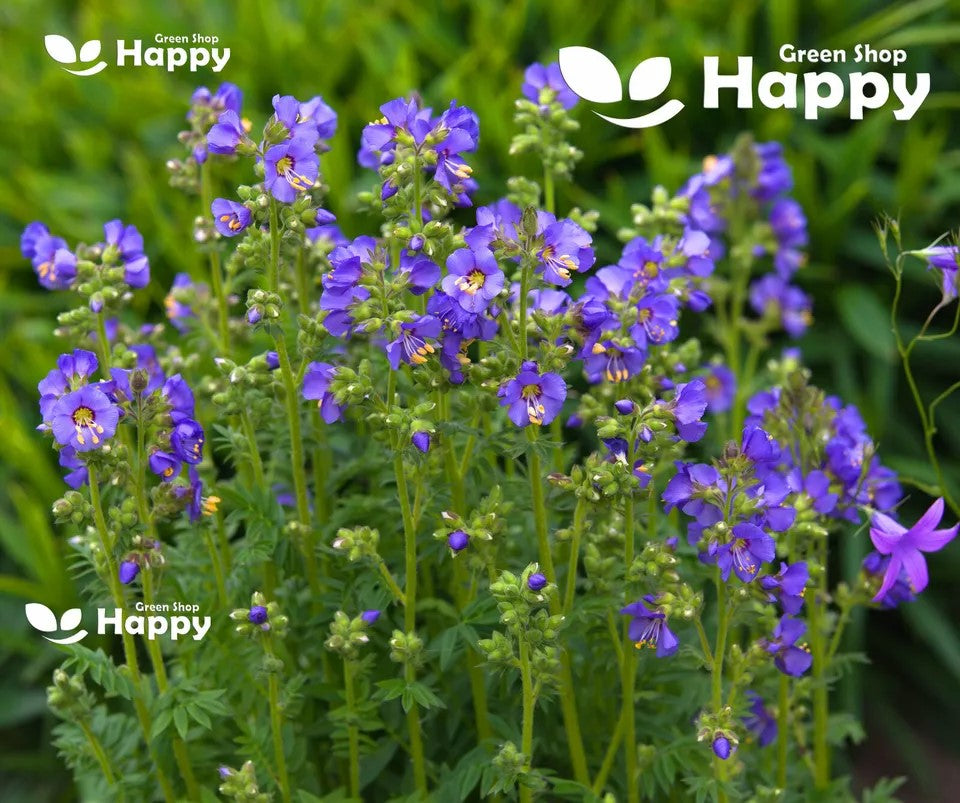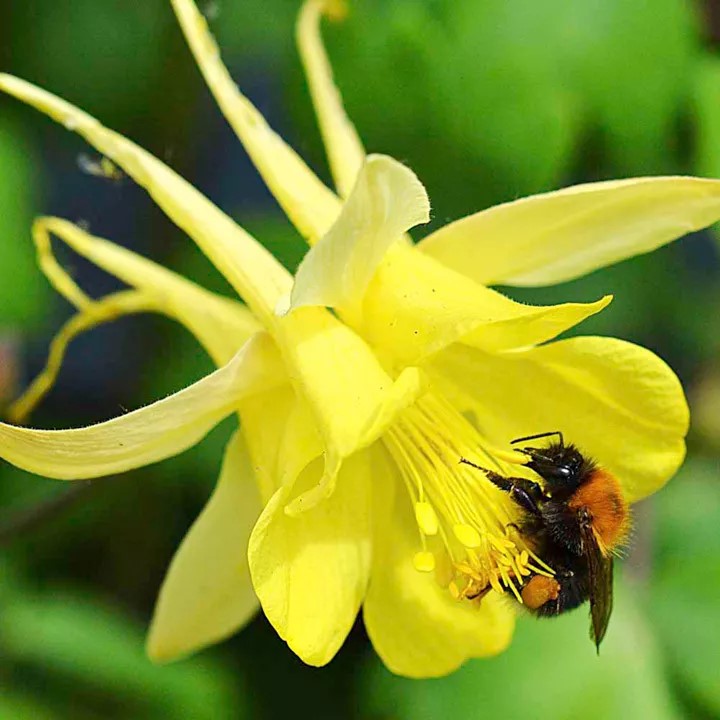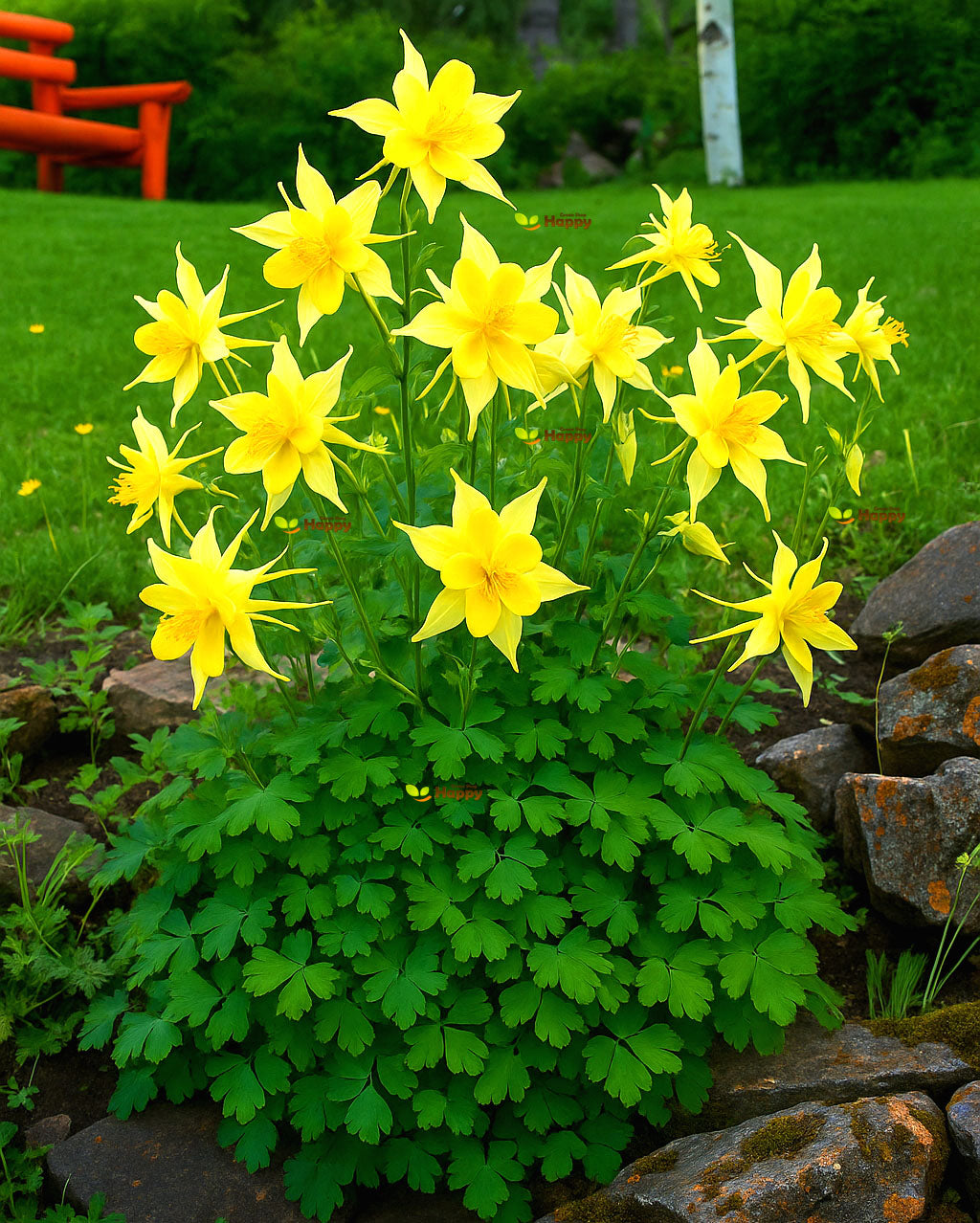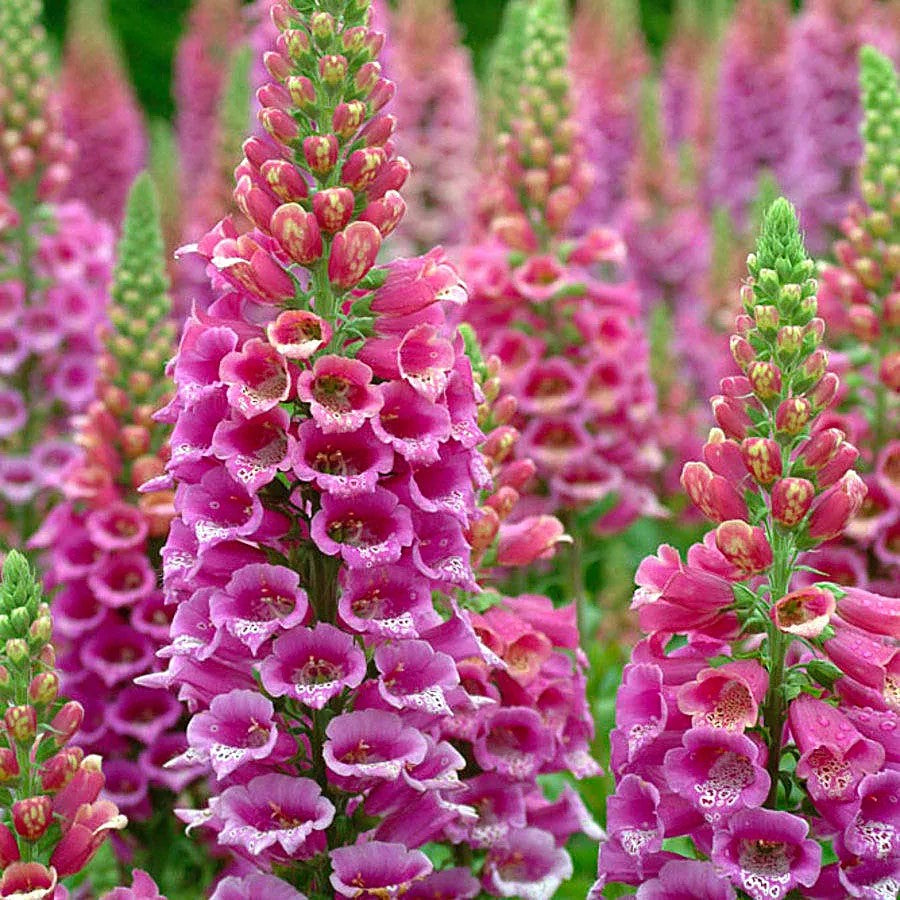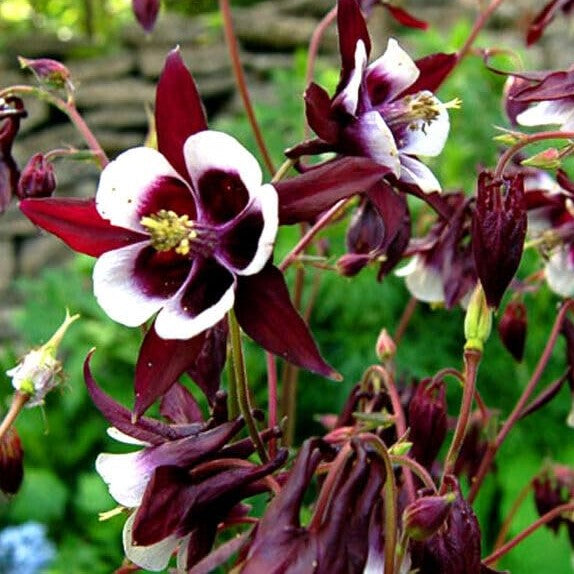Sort by:
12 products
12 products
Discover the uniqueness
Experience the delightful flavor and health benefits of Herbal Blends.
Woodland Tobacco Plant White Seeds (Nicotiana sylvestris)
Woodland Tobacco Plant White is a tall, elegant annual with long, tubular, fragrant white flowers that bloom in summer and autumn. Its stately, upright habit makes it ideal for back borders, large containers, or mixed garden beds. Loved for its dramatic height, lovely scent, and long flowering period, it adds sophistication and fragrance to any garden.
What Makes It Special
-
Tall, elegant white tubular flowers with a sweet fragrance
-
Long-flowering from summer to autumn
-
Upright, dramatic growth perfect for back borders and large displays
-
Attracts pollinators and adds architectural interest
Key Features
-
Botanical name: Nicotiana sylvestris
-
Variety: White
-
Seed count: Approx. seeds per pack
-
Height/Spread: 120–180 cm tall, 40–60 cm spread
-
Position: Full sun to partial shade; fertile, well-drained soil
-
Flowering period: July–October
Ideal For
-
Back borders and large garden beds
-
Containers and patios (with support)
-
Cutting gardens for fragrant blooms
-
Pollinator-friendly and dramatic garden displays
Sowing Instructions
-
When to sow: February–April indoors; March–May outdoors
-
How to sow:
-
Sow seeds on the surface of moist seed compost and press lightly; do not cover
-
Germination occurs in 10–14 days at 18–22°C
-
-
Transplanting: Plant seedlings outdoors 30–50 cm apart after frost
-
Care: Water moderately; provide support if necessary; deadhead faded flowers to encourage continuous blooming
Woodland Sage Seeds (Salvia nemorosa)
Woodland Sage is a hardy perennial prized for its upright spires of violet-blue flowers that bloom from early summer into autumn. With aromatic foliage and a long flowering season, it’s a pollinator magnet, attracting bees and butterflies all season long. Easy to grow and drought-tolerant once established, it’s a reliable choice for borders, cottage gardens, and naturalistic plantings.
What Makes It Special
-
Striking violet-blue flower spikes that bloom for months
-
Attracts bees, butterflies, and pollinators
-
Low-maintenance, hardy, and drought-tolerant
Key Features
-
Botanical name: Salvia nemorosa
-
Hardy perennial
-
Height: 40–60 cm (16–24 in)
-
Bloom time: Early summer to autumn
-
Aromatic foliage
Ideal For
-
Borders and cottage gardens
-
Pollinator-friendly plantings
-
Naturalistic and dry gardens
Sowing
-
Sow indoors Feb–Apr or outdoors Apr–Jun
-
Press seeds lightly into soil; do not cover deeply
-
Germination: 14–21 days at 18–22°C
-
Space plants 30–40 cm apart
-
Flowers from the second year onward
Venus’s Navelwort Seeds (Omphalodes linifolia)
Add charming groundcover to shaded areas with Venus’s Navelwort (Omphalodes linifolia). This perennial produces delicate, star-shaped blue flowers above lush green foliage, forming a carpet of color in spring and early summer. Hardy and easy to grow, it’s perfect for woodland gardens, borders, and shady rock gardens, attracting pollinators and adding a soft, natural touch.
How to Grow
-
Sow seeds indoors in late winter or outdoors in early spring.
-
Use well-drained, humus-rich soil in partial to full shade.
-
Scatter seeds thinly on the soil surface and press lightly; do not cover.
-
Keep soil consistently moist until germination (14–28 days).
-
Thin seedlings to 20–25 cm apart once established.
-
Mulch around plants to retain moisture and encourage healthy growth.
Key Features
-
Delicate star-shaped blue flowers over lush green foliage
-
Hardy perennial, forming a dense groundcover
-
Ideal for shaded borders, woodland gardens, and rock gardens
-
Attracts pollinators including bees and butterflies
-
Low-maintenance and long-lasting
Ideal For
-
Shaded garden beds and borders
-
Woodland and cottage-style gardens
-
Rock gardens and naturalized plantings
-
Pollinator-friendly landscapes
Sowing
-
Best time: Late winter indoors or early spring outdoors
-
Germination: 14–28 days
-
Sow thinly, press lightly, do not cover
-
Prefers partial to full shade and well-drained, humus-rich soil
Quick Tip
-
Provide consistent moisture and partial shade for best flowering and lush foliage.
Rudbeckia 'Autumn Forest' – Seeds (Rudbeckia hirta)
Rudbeckia 'Autumn Forest' is a striking variety of Black-Eyed Susan with warm, fiery shades of red, bronze, orange, and golden yellow – like the colors of a glowing autumn woodland. Its daisy-like flowers with dark centers bloom generously over summer and early autumn, creating a bold display that attracts bees and butterflies.
What Makes It Special
-
Brilliant mix of autumn-toned blooms
-
Long flowering season with continuous color
-
Pollinator-friendly, attracting bees and butterflies
-
Excellent for cutting, borders, and containers
Key Features
-
Botanical name: Rudbeckia hirta
-
Common name: Black-Eyed Susan
-
Seed count: Approx. seeds per pack
-
Height/Spread: 45–60 cm tall, bushy habit
-
Position: Full sun; fertile, well-drained soil
-
Flowering period: June–October
Ideal For
-
Cottage gardens and wildlife-friendly borders
-
Pollinator-friendly plantings
-
Container displays
-
Cut flower arrangements
Sowing Instructions
-
When to sow: February–April indoors; April–June outdoors
-
How to sow:
-
Sow thinly on the surface of moist compost, press lightly, and cover very lightly with fine compost or vermiculite
-
Maintain 18–22°C; germination takes 7–21 days
-
-
Transplanting: Prick out seedlings when large enough; plant outdoors after frost
-
Care: Deadhead spent blooms to extend flowering. Water well in dry spells.
Ramsons Wild Garlic – Seeds (Allium ursinum)
Ramsons Wild Garlic is a hardy perennial herb prized for its aromatic, garlicky leaves. Perfect for adding fresh, vibrant flavor to salads, pestos, soups, and sauces, it is a versatile addition to any herb or woodland garden. Its delicate white flowers also provide ornamental interest and attract pollinators.
This low-maintenance plant thrives in shaded, moist areas and can naturalize over time, creating a fragrant ground cover in suitable conditions.
How to Grow
-
Sow indoors: January – March
-
Sow outdoors: March – May
-
Depth: 0.5–1 cm
-
Spacing: 20–25 cm between plants
-
Position: Partial to full shade, woodland-type environment
-
Soil: Moist, fertile, well-drained
-
Watering: Keep soil consistently moist, especially during dry spells
Key Features
-
Hardy perennial with aromatic, garlicky leaves
-
Ideal for salads, pestos, soups, and sauces
-
Attractive white flowers that attract pollinators
-
Low-maintenance, naturalizes well in shaded areas
-
Thrives in moist, fertile, well-drained soils
Harvest
-
Harvesting period: March – May
-
Pick young leaves before flowering for the best flavor.
Short Tip
Avoid harvesting all leaves at once; leave some for continued growth and flowering.
Jacob’s Ladder Seeds (Polemonium caeruleum)
Jacob’s Ladder is a graceful perennial named for its ladder-like leaves and clusters of charming, sky-blue, bell-shaped flowers. Blooming in late spring to early summer, it adds elegance to borders, woodland gardens, and cottage-style plantings. Easy to grow and loved by pollinators, this hardy perennial thrives in partial shade and cool conditions.
What Makes It Special
-
Sky-blue bell-shaped flowers with golden stamens
-
Attractive ladder-like foliage
-
Excellent for shaded borders and pollinator gardens
Key Features
-
Botanical name: Polemonium caeruleum
-
Hardy perennial
-
Height: 60–90 cm
-
Bloom time: Late spring to early summer
Ideal For
-
Woodland and cottage gardens
-
Shaded borders
-
Pollinator-friendly plantings
Sowing
-
Sow indoors Feb–Apr or outdoors Apr–Jun
-
Cover seeds lightly with soil
-
Germination: 21–30 days at 15–20°C
-
Space plants 30–40 cm apart
-
Flowers from the second year onward
Golden Columbine Seeds (Aquilegia chrysantha)
Bright and graceful, Golden Columbine produces striking yellow, spurred flowers that nod delicately above fern-like foliage. Native to North America, this hardy perennial is known for its long spurs and cheerful color, bringing light and elegance to borders, rock gardens, and natural plantings. Highly attractive to hummingbirds, bees, and butterflies.
What Makes It Special
-
Brilliant golden-yellow blooms with long spurs
-
Native perennial, hardy and easy to grow
-
Excellent for pollinator-friendly gardens
Key Features
-
Botanical name: Aquilegia chrysantha
-
Hardy perennial
-
Height: 60–90 cm (24–36 in)
-
Bloom time: Late spring to early summer
Ideal For
-
Cottage and rock gardens
-
Wildlife and pollinator-friendly spaces
-
Naturalized and woodland plantings
Sowing
-
Sow indoors Feb–Apr or outdoors Apr–Jun
-
Lightly cover seeds; needs some light to germinate
-
Germination: 21–35 days at 15–20°C
-
Thin seedlings 30 cm apart
-
Flowers from the second year after sowing
Foxglove 'Excelsior' Mix Seeds (Digitalis purpurea – Biennial)
The Foxglove 'Excelsior' Mix is one of the most admired cottage garden classics, producing tall, elegant spires of tubular flowers in shades of rose, lavender, purple, cream, and white, often marked with speckled throats. Unlike traditional foxgloves, the Excelsior strain displays its flowers all around the stem, creating a fuller and more impressive floral column. As a biennial, it flowers in the second year after sowing and readily self-seeds for future displays.
What Makes It Special
-
Traditional cottage garden favorite with tall, majestic flower spikes
-
Excelsior strain bears blooms on all sides of the stem for maximum impact
-
Attracts bees, butterflies, and hummingbirds
-
Excellent cut flower and stunning for borders or woodland plantings
Key Features
-
Botanical name: Digitalis purpurea
-
Variety: 'Excelsior' Mix
-
Height/Spread: 120–150 cm tall, 40–60 cm spread
-
Position: Partial shade to sun; prefers rich, moist, well-drained soil
-
Flowering period: Late spring to mid-summer (second year)
-
Lifespan: Biennial, often self-seeds for naturalized displays
Ideal For
-
Cottage and woodland-style gardens
-
Back borders for height and structure
-
Naturalizing in shaded areas
-
Pollinator-friendly gardens
Sowing Instructions
-
When to sow: Late spring to summer (May–July) for flowering the following year.
-
How to sow:
-
Sow seeds on the surface of moist compost (do not cover – light aids germination).
-
Keep at 18–22°C until germination (14–30 days).
-
Transplant seedlings 45 cm apart in borders or beds.
-
-
Care: Water regularly, especially in dry spells. Remove spent flower spikes to extend blooming, or allow some to seed for natural regeneration.
Columbine ‘William Guinness’ – Seeds
(Aquilegia vulgaris)
Columbine ‘William Guinness’ is a charming perennial featuring elegant, spurred flowers in deep, rich blue-violet shades with contrasting yellow centers. Its graceful, nodding blooms make it a standout in borders, cottage gardens, and pollinator-friendly plantings. Easy to grow and long-lasting, this variety adds height and sophistication to any garden.
Why Grow Columbine ‘William Guinness’?
-
Striking blue-violet spurred flowers with yellow centers
-
Hardy perennial, easy to grow
-
Long flowering period in late spring to early summer
-
Attracts bees, butterflies, and hummingbirds
Key Features
-
Type: Hardy perennial
-
Height: 60–90 cm
-
Flowers: Late spring to early summer
-
Position: Full sun to partial shade
-
Soil: Well-drained, moderately fertile
Ideal For
-
Cottage and mixed borders
-
Pollinator-friendly gardens
-
Woodland and naturalistic plantings
-
Adding vertical elegance to flower beds
Sowing & Growing
-
Sow indoors: February–April in seed trays
-
Germination: 14–21 days at 18–20°C
-
Transplant: Harden off and plant outside after last frost
-
Care: Water moderately, mulch to retain moisture, deadhead to prolong blooms
Showing 9/12




